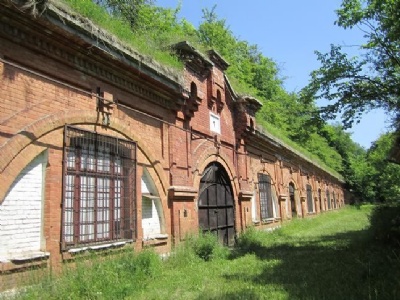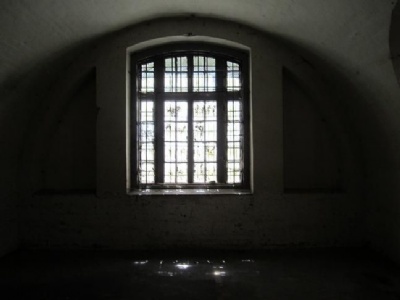Pomiechówek – Fort III
Between 1883 and 1888, this fort was built as part of a larger defensive citadel around Modlin about twenty kilometres north of Warsaw. During First World War, the fort was captured by the Germans but was recaptured by Poland in 1918. In 1920 it was used as a detention camp for Russian prisoners of war taken by the poles during the polish-russian war (1919-1921). In September 1939, the fort was defended by polish forces, but within a month they was forced to surrender to the overpowering german forces. In 1940, the germans began to use the fort as a prison. Between 1941 and 1944 Gestapo was in charge of the prison. In July 1944, when the Soviet Red army approached Warsaw, the prison was evacuated and the prisoners were sent to other prisons or camps, if not killed.
Info about the prison’s administration is scarce, but between 1943 and July 1944, SS-Obersturmführer Jerzy Scherfer, was commandant. Reason for this is that all the documents were destroyed by the germans when the prsion was evacuated For the same reason, it is difficult to establish how many prisoners ended up and/or were murdered in prison or deported to other places. An estimated 100,000 were imprisoned, including about 10,000 Jews murdered in the prison. A total of 65,000 were killed in prison. The majority of prisoners killed were shot at the fort walls and buried within the fort’s confines. But prisoners were also executed by hanging or simply beaten to death. In January 1944, about twenty Jewish prisoners were forced to dig up bodies and cremate them over open fires. The Soviet Red army entered the fort in January, 1945.
Current status: Preserved with information board (2012).
Location: 52°28'07.9"N 20°43'30.3"E
Get there: Car.
Follow up in books: Kogon, Eugen: The Theory and Practice of Hell: The German Concentration Camps and the System Behind Them (2006).







Between 1952 and 2006, the Polish army used the fort as a storage room for ammunition. Since 2006, the fort has been abandoned but is cordoned off and can only be visited if you contact an organization called Modlin Twierdza. An organization that takes care of all the forts in the area. The monument and the information board are located just outside the barriers. There are ambitions that the fort will become a museum, but it’s a question about money. The fort is still relatively intact and preserved, although the vegetation is palpable. The traces of the Nazi crimes remain in the form of marks on the walls where the prisoners were shot and at the cemetery there are some thirty crosses with the names of some of those who were murdered in the fort. The English literature about fort is inadequate but there is a detailed book in polish, but as long as it is not translated into english, the knowledge of the fort in western circles will be limited.